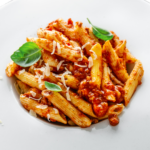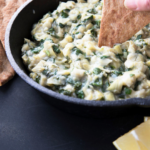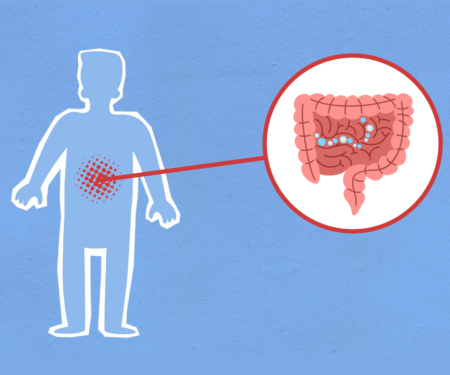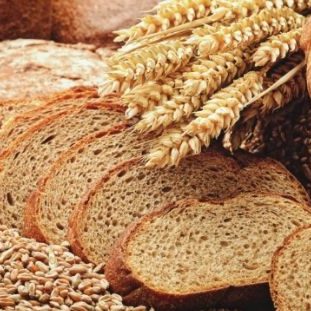Digestive Health Specialists, PA is here to help if you, or someone you know, would like more information or if you are experiencing any digestive health symptoms and would like further evaluation. Feel free to call us at 336-768-6211 or fill out the form below.
Navigating Lactose Intolerance: Causes, Solutions, and Delicious Recipes
Lactose intolerance, a common digestive disorder, affects millions of people worldwide. If you’ve ever experienced uncomfortable bloating, gas, or stomach cramps after consuming dairy products, you might be one of them. But fear not; understanding the causes and exploring solutions can help you enjoy dairy without the discomfort.
What Causes Lactose Intolerance?
Lactose intolerance occurs when your body has difficulty digesting lactose, a sugar in milk and dairy products. This inability to break down lactose stems from a deficiency in an enzyme called lactase produced in the small intestine. Lactase breaks down lactose into simpler sugars (glucose and galactose) that your body can absorb and use for energy.
There are three primary types of lactose intolerance:
- Primary Lactose Intolerance: This is the most common type and typically develops over time. Most newborns have the lactase enzyme to help absorb and break down their mother’s milk. But for some people, as they age their production of lactase decreases. As a result, they may experience lactose intolerance symptoms later in life, even if they had no issues with dairy consumption in their younger years.
- Secondary Lactose Intolerance: Some medical conditions, such as celiac disease, Crohn’s disease, or gastroenteritis, can damage the small intestine, reducing lactase production. Secondary lactose intolerance is usually temporary and improves once the underlying condition is treated.
- Congenital Lactose Intolerance: This rare genetic condition occurs from birth and results in little to no lactase production. Infants with congenital lactose intolerance may experience severe symptoms from the moment they start consuming milk.
Understanding the cause of your lactose intolerance can help you manage it effectively.
Can Lactose Intolerance Be Improved?
While lactose intolerance cannot be completely reversed, there are several strategies and dietary modifications to help you enjoy dairy products without discomfort:
- Lactase Supplements: Over-the-counter lactase supplements can be taken before consuming dairy. These supplements provide the missing enzyme, allowing you to digest lactose more effectively. It’s essential to follow the recommended dosage instructions.
- Lactose-Free Dairy Products: An array of lactose-free dairy products are available in most grocery stores. These products, like lactose-free milk, cheese, and yogurt, are treated to break down lactose, making them easier to digest.
- Dairy Alternatives: Explore a variety of dairy alternatives made from soy, almond, coconut, or rice. These options, such as almond milk or soy-based cheese, offer a lactose-free alternative to traditional dairy while maintaining similar tastes and textures.
- Gradual Tolerance Building: Some individuals with lactose intolerance find that they can tolerate small amounts of dairy over time. Gradually introducing dairy back into your diet may help your body adapt to processing lactose more efficiently.
- Probiotics: Probiotic supplements or foods like yogurt with live active cultures may improve lactose digestion by promoting a healthy gut environment. These can be particularly beneficial for individuals with mild lactose intolerance.
- Personalized Diet Plans: Consult a registered dietitian or healthcare professional to create a personalized diet plan that suits your specific needs and preferences. They can help you identify trigger foods and plan balanced, lactose-free meals.
Resources for Lactose Intolerance Support
For those living with lactose intolerance, reliable resources and communities are available to provide guidance, recipes, and support. Below is a list of linked articles on lactose intolerance.
- National Institute of Diabetes and Digestive and Kidney Diseases: https://www.niddk.nih.gov/health-information/digestive-diseases/lactose-intolerance
- International Foundation for Gastrointestinal Disorders: https://iffgd.org/gi-disorders/other-disorders/lactose-intolerance/
- American Gastroenterological Association: https://patient.gastro.org/lactose-intolerance/
- Academy of Nutrition and Dietetics: https://www.eatright.org/health/health-conditions/allergies-and-intolerances/lactose-intolerance
Delicious Lactose-Free Recipes to Try
Here are three delectable lactose-free recipes to kick-start your journey to dairy-free delight:
Creamy Tomato Basil Pasta (Lactose-Free)
Ingredients:
- 1 pound gluten-free pasta of choice or sub-regular pasta
- 1 large yellow onion, roughly 1 1/4 cups chopped
- 5 medium tomatoes roughly 750 grams
- ½ cup tomato sauce plain, from a can
- 3 tbsp tomato paste
- ½ heaping cup of raw cashews
- ½ cup basil divided
- 6 large cloves garlic
- ¼ cup olive oil divided into 2 x 2 tbsp
- 1 tsp salt
- Black pepper to taste
- Optional: 2 tbsp nutritional yeast
- Optional: 1/2 tsp red pepper flakes for spice
Instructions:
- Preheat oven to 400 degrees Fahrenheit.
- Add the cashews to a bowl and cover with boiling water.
- Peel and chop the onion into large chunks, peel the garlic, and cut the tomatoes in half and then half again and add to a baking tray lined with parchment paper.
- Drizzle with 2 tbsp of olive oil and a few twists of fresh black pepper, and toss so everything is well coated.
- Bake for 30 minutes.
- During the final 10 minutes, bring a large pot of water to a boil and cook pasta according to package instructions.
- Let cool for a few minutes until the tomatoes are easy to handle. Carefully remove the skins of the tomatoes. They will be hot, but the skins should peel off easily. I like to hold the tomatoes right over the blender and pinch the back of the skins so the inside falls right inside.
- Drain and rinse the soaked cashews and add to a blender.
- Add the roasted tomatoes, onion, and garlic to a blender, and be sure to get all the juices in there.
- Add all remaining ingredients but only 1/4 cup of basil to a high-speed blender and process until completely smooth.
- Taste and adjust seasonings as desired.
- Pour the sauce over the cooked pasta and stir until well-coated.
- Add in the remaining chopped basil and mix through. Garnish with fresh pepper, red pepper flakes, and extra basil if desired, and enjoy!
Ingredients:
- 4 very ripe medium bananas
- 1/2 cup granulated sugar
- 1/2 cup dark brown sugar
- 1/2 cup canola oil*
- 2 large eggs
- 2 teaspoons pure vanilla extract
- 1 1/2 cups all-purpose flour
- 1 teaspoon baking soda
- 2 teaspoons ground cinnamon
- 1 teaspoon fine-grain sea salt
Instructions:
-
Preheat oven to 350 degrees Fahrenheit. Grease a standard-size loaf pan (mine is 4.5″ x 8.5″). Set aside.
-
To a large mixing bowl, add the bananas. Using a potato masher, smash until as smooth as possible. Stir in the sugar and canola oil. Add the eggs and whisk together until smooth. Whisk in the vanilla.
-
Set a fine-mesh sieve over the bowl. Add the flour, baking soda, cinnamon, and salt to the sieve. Sift over the wet ingredients. Using a spatula, fold the dry ingredients into the wet until just combined.
-
Pour into the prepared loaf pan.
-
Bake until the middle is set and a toothpick inserted into the middle comes out clean, 45 – 55 minutes (if you’re using a larger pan than my 4.5″ x 8.5″ pan, start checking at around the 45-minute mark. For the smaller pan, it’ll take a bit more time to cook in the middle – closer to 55 minutes).
-
Remove from the oven and let the loaf cool in the pan for about 10 minutes. Use a butter knife to loosen the sides of the loaf, then gently invert the pan to remove the loaf. Let cool on a wire rack.
-
Wrap in plastic wrap to store. Bonus: The plastic wrap also makes it nice and moist. Yum!
Vegan Spinach and Artichoke Dip
Ingredients:
- 1 1/2 cups raw cashews
- 4 cloves garlic
- 1 small onion, diced
- 1 1/2 cups unsweetened non-dairy milk
- 1/4 cup nutritional yeast
- 1 small lemon, juiced (2 tablespoons)
- 1-1 1/2 teaspoons salt
- 4 cups loosely packed fresh spinach
- (2) 14-ounce cans of artichokes drained & rinsed
- Optional: Vegan Parmesan Cheese for serving
Instructions:
-
Preheat the oven to 425 degrees F.
-
Soak the cashews: Heat about 3 cups of water in a tea kettle or small pot. Pour the boiling hot water over the cashews and let them soak for 5 minutes. Drain them when ready to blend.
-
In a small pan, saute the garlic and onion for 2-3 minutes using either a tablespoon of olive oil or water, until the onion is slightly translucent. Set aside.
-
In a high-powered blender such as a Vitamix, add the soaked, drained cashews, unsweetened milk, nutritional yeast, lemon juice, and 1 teaspoon salt. Blend until very smooth.
-
Now add the cooked onions/garlic, spinach and artichokes. Pulse a couple of times, but do not blend. You want to leave quite a bit of chunky texture! Taste for salt, add more to taste.
-
Transfer to an oven-safe dish (I used a 9-inch pie dish) and bake for 20 minutes or so until warm, bubbly, and golden brown on top.
-
Sprinkle with vegan parmesan, if desired, and serve with a sliced baguette, pita chips, tortilla chips, or vegetable sticks. Enjoy!
Lactose intolerance doesn’t have to mean saying goodbye to your favorite dairy-based dishes. By understanding its causes and implementing practical solutions, you can continue to enjoy a wide range of delicious lactose-free recipes and lead a comfortable, dairy-free lifestyle. Whether you’re seeking support from online communities or experimenting with dairy-free alternatives, there are resources and tasty options available to make your lactose intolerance journey enjoyable.













